
Did you know that Nabisco now makes gluten-free Oreo cookies? In this post, I share how these cookies taste, what ingredients they contain, and where you can buy them. I also tested them for hidden gluten and reveal how they fared below. This post contains affiliate links. Please see my disclosures.
Gluten-free Oreo cookies have taken the gluten-free community by storm. I had to try the new cookies as soon as I could get my hands on a package.
I think the gluten-free Oreo cookies taste just like I remember regular Oreo cookies tasting. My son thinks they taste better. Regardless, no one is going to balk at eating these tasty cookies.
In case you haven’t heard, Nabisco launched both Gluten-Free Original Oreo cookies and Gluten-Free Double Stuf Oreo cookies in January 2021. Both cookies are widely available at Kroger, Safeway, Target, and Walmart.
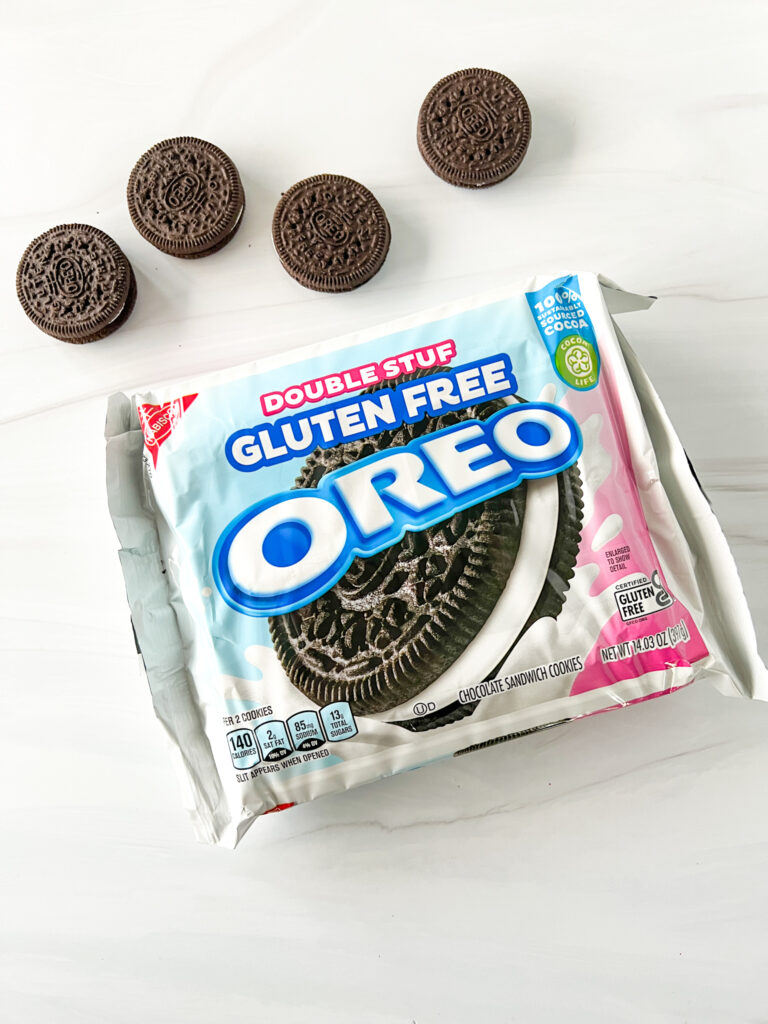
As for January 2023, gluten-free mint-flavored Oreo cookies are available and are a permanent addition to the Oreo line-up. I taste-tested a mint Oreo and loved it. It tasted like a Thin Mint cookie!
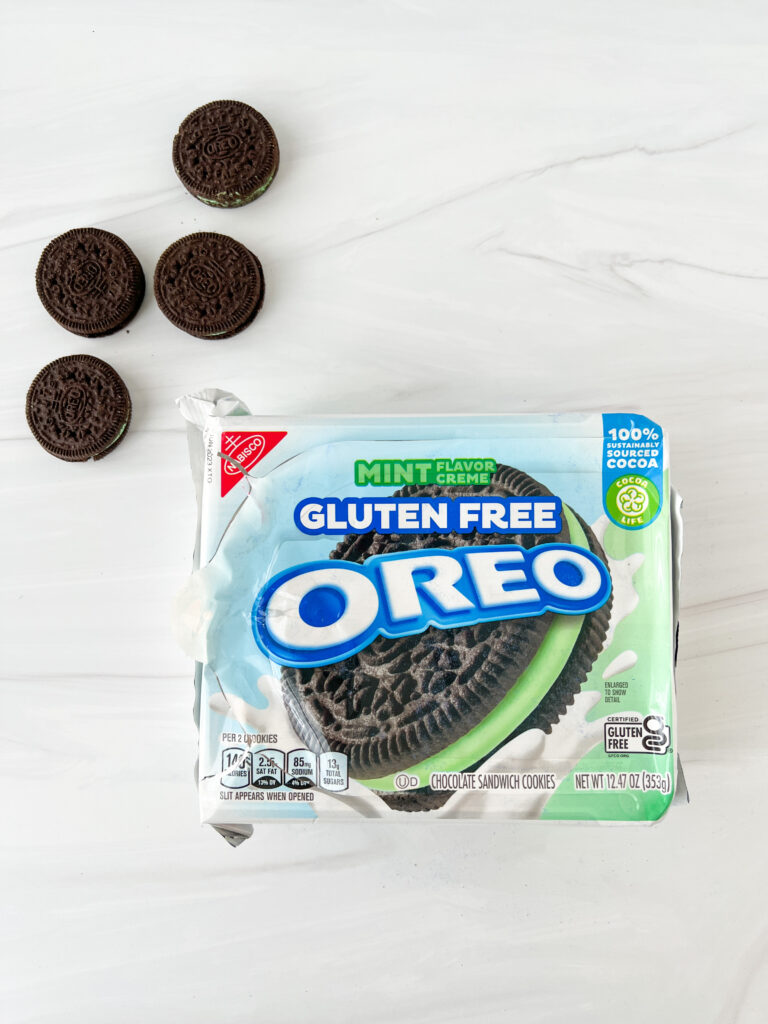
What Are Gluten-Free Oreos Made Of?
Whenever I post about Oreo cookies on Instagram and in my newsletter, someone asks me about the ingredients. The ingredients found inside a gluten-free Oreo cookie include:
- Sugar
- White rice flour
- Tapioca Starch
- Palm Oil
- Canola Oil
- Whole oat flour (gluten free – see below)
- Cornstarch
- Cocoa
- Invert Sugar
- Soy Lecithin
- Baking soda
- Salt
- Xanthan gum
- Chocolate
- Artificial flavor
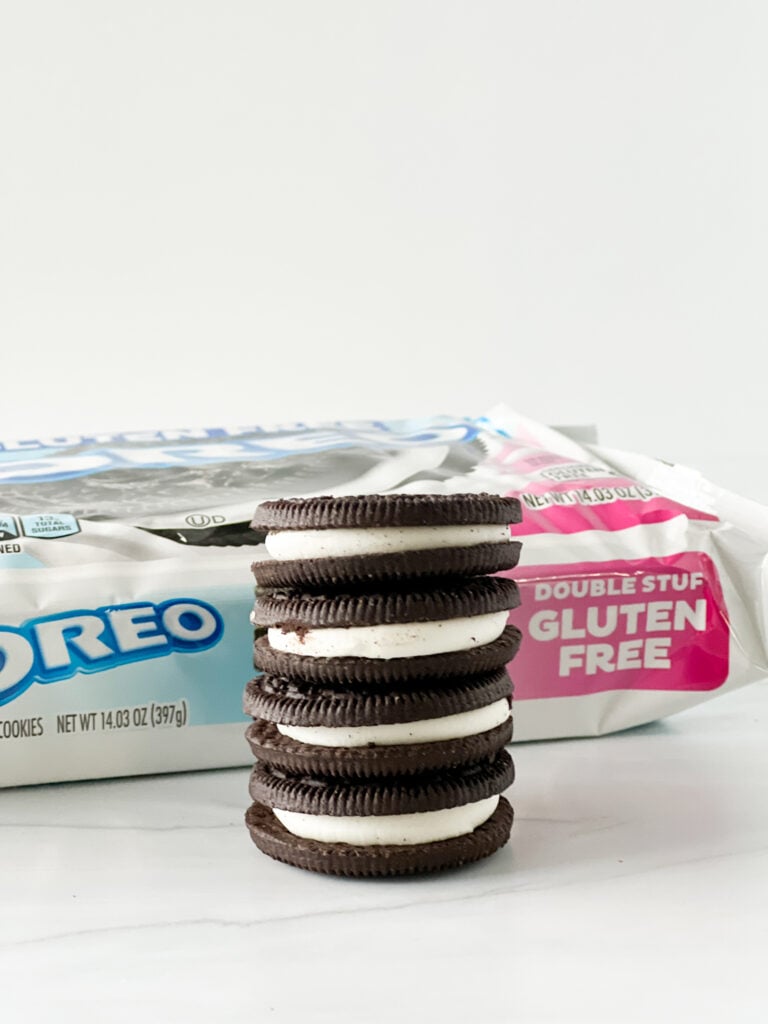
And if you’re curious what’s inside the mint-flavored Oreo cookies, here’s a snapshot of the ingredient list:
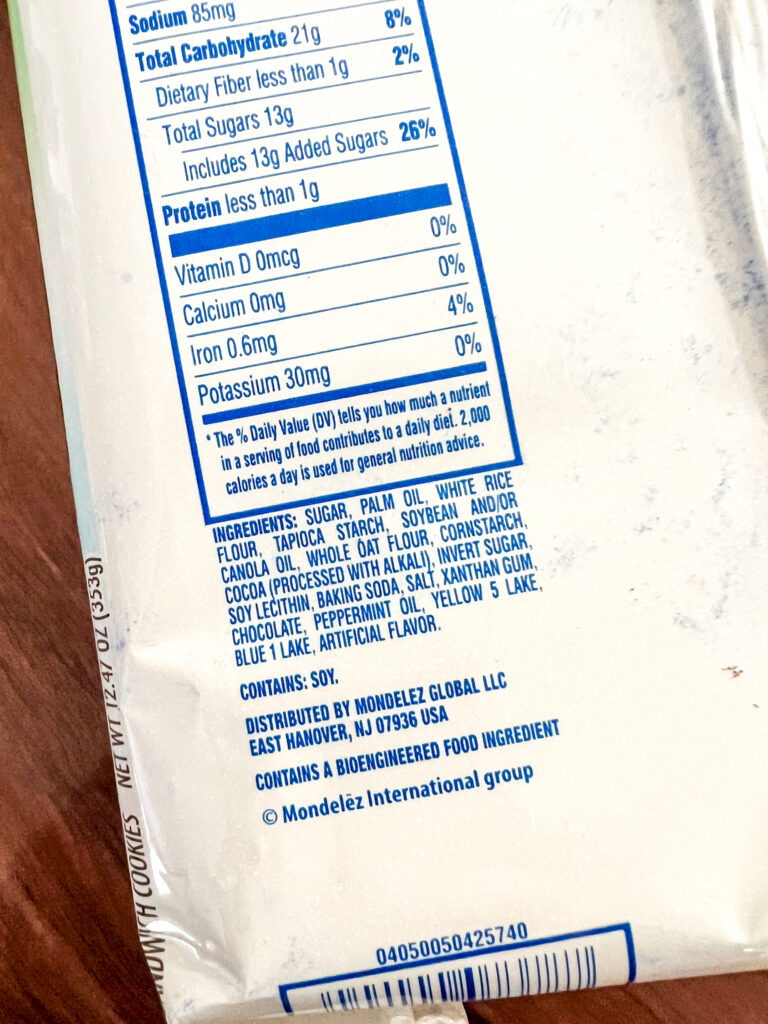
Rest assured, gluten-free Oreo cookies (all flavors) are gluten free for these reasons:
(1) The Company Says They’re Gluten Free: Nabisco says all the ingredients are gluten-free and safe, even the oat flour. Read more about oats in Are Oats Gluten Free? Unpacking Confusing and Contradictory Information.
Oats can be a confusing ingredient but are generally considered safe when labeled gluten free. A small portion of people with celiac disease cannot tolerate oats or experience what is known as cross-reactivity. If this is you, avoid Oreo cookies.
(2) They’re Certified Gluten Free: Oreo cookies are certified gluten free by the Gluten-Free Certification Organization (GFCO), the largest third-party gluten-free certifying agency in the U.S. The GFCO only certifies products that test at 10 ppm of gluten or less. The FDA only requires products to test below 20 ppm.
(3) They Passed the Hidden Gluten Test: I independently tested gluten-free Oreos for hidden gluten using my Nima Sensor, a portable gluten-detecting device. Nima displayed a smiley face, which means it did not find gluten.
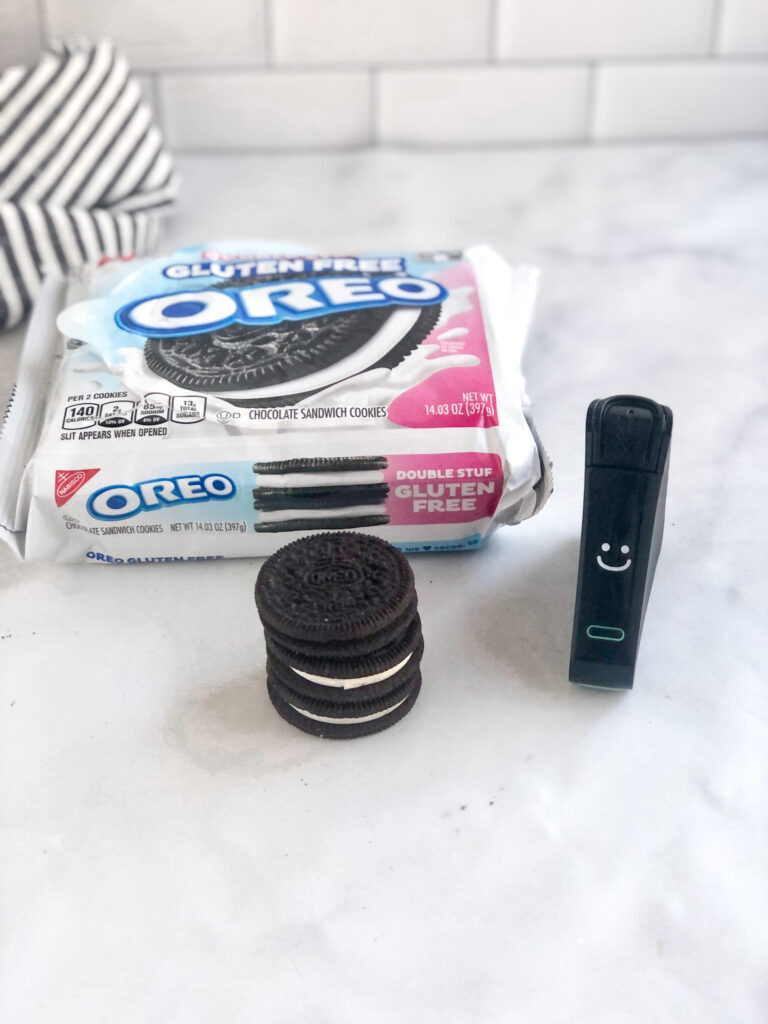
Recipes with Oreo Cookies
I love snacking on Oreo cookies as is, but of course, they work well in a variety of recipes:
Cookies & Cream Pudding: Elevate average chocolate pudding with my Cookies & Cream Chocolate Pudding recipe using gluten-free Oreo cookies, Glutino sandwich cookies, or Joe-Joe’s. from Trader Joe’s. I might be biased, but I think the gluten-free Oreo cookies taste the best.
My recipe calls for homemade chocolate pudding, but if you want to use a boxed pudding mix, you’ll want to read this article first. I tested several pudding brands for hidden gluten, and not all passed the test.

Oreo Cookie Mug Cake: I made this fun and delicious gluten-free Oreo cookie mug cake and shared it on Instagram. It’s super tasty! Give it a try.
You can buy gluten-free Oreo cookies at most major retailers across the U.S. or on Amazon.
Why would the Oreo company include Canola oil, Palm oil, and Artificial flavor in such wonderful product?
Why would you want to eat Oreo cookies that contain a bioengineered product and artificial colours and flavours. Nostalgia isn’t worth it.